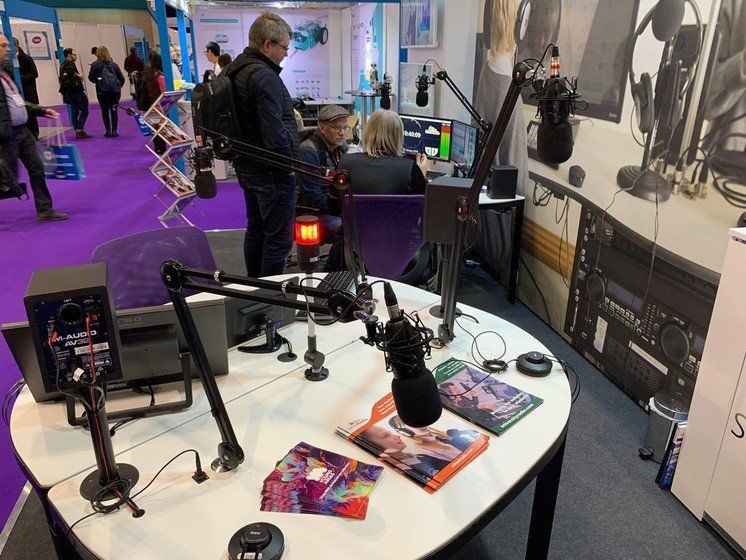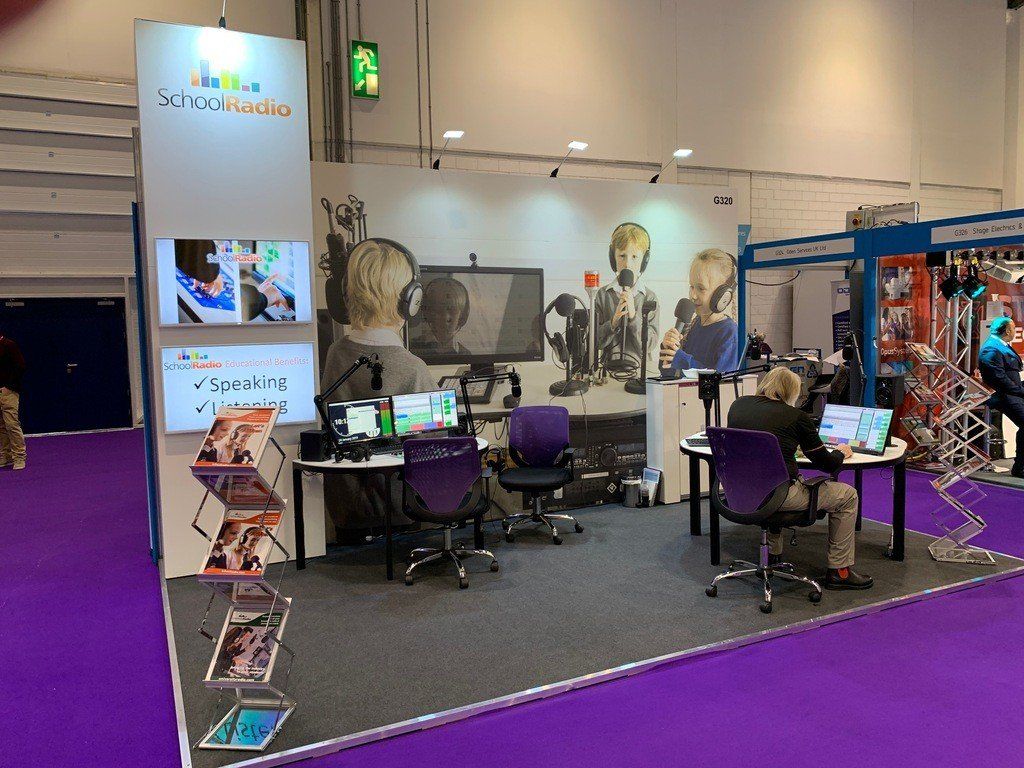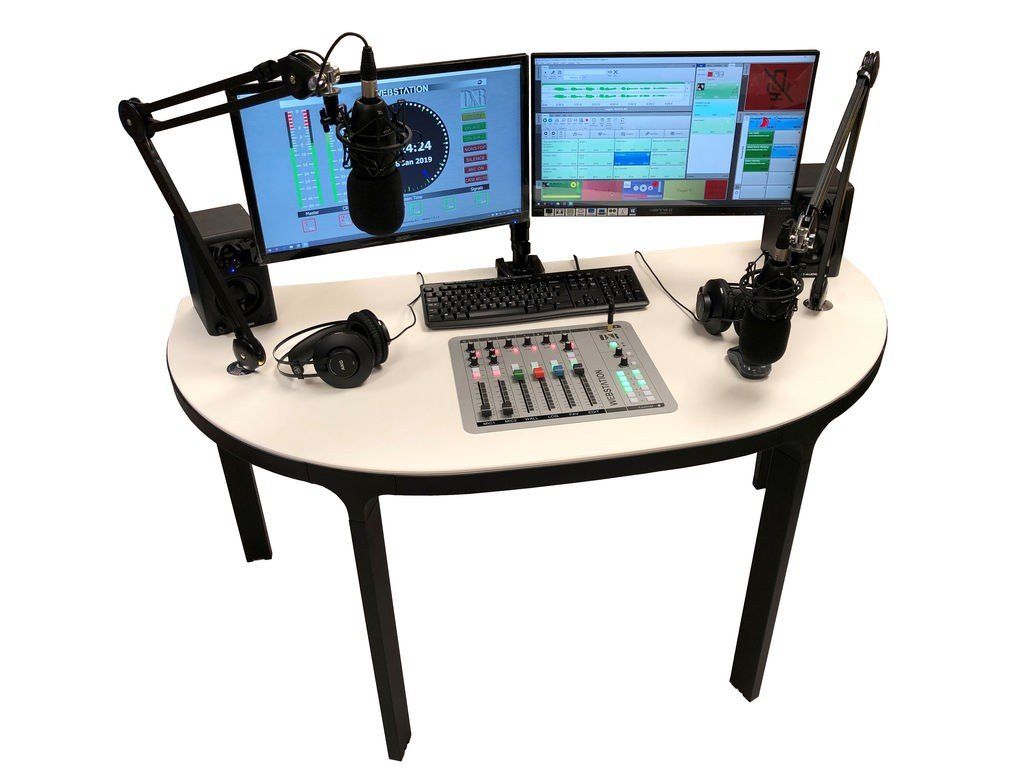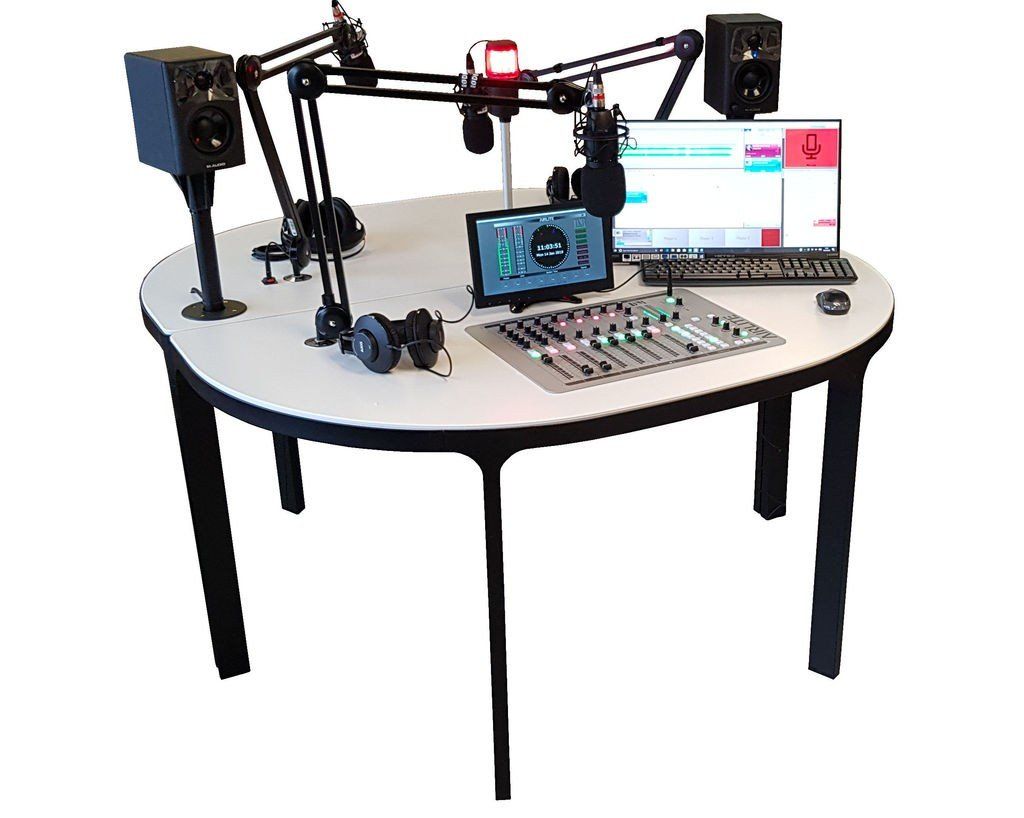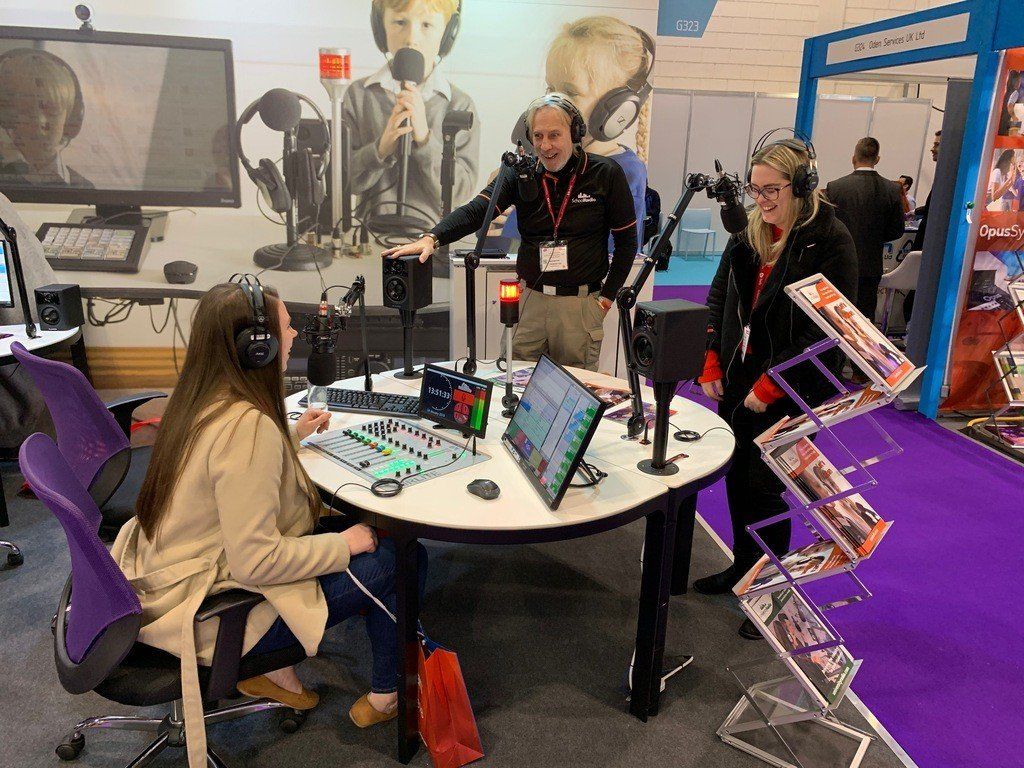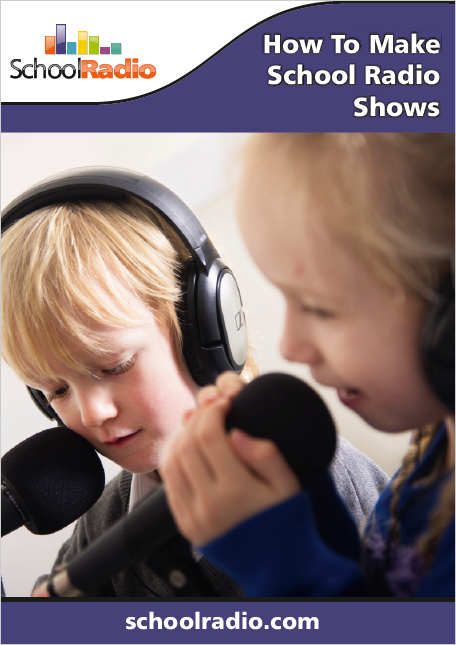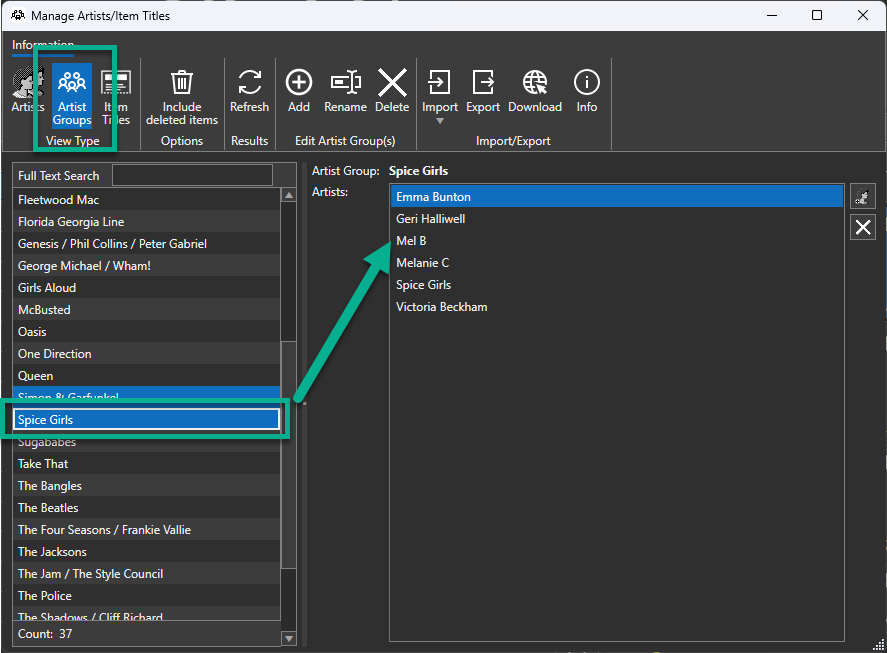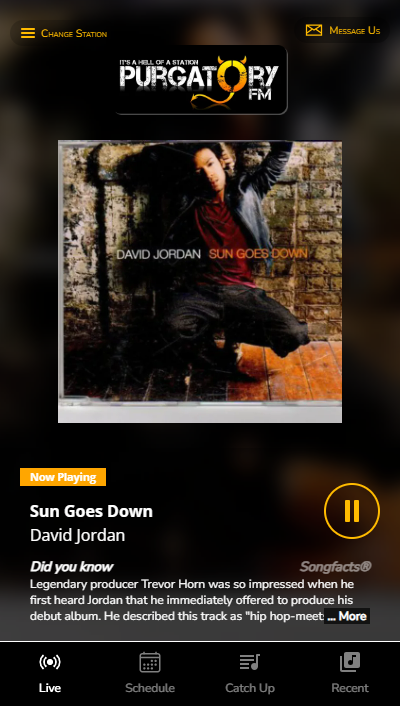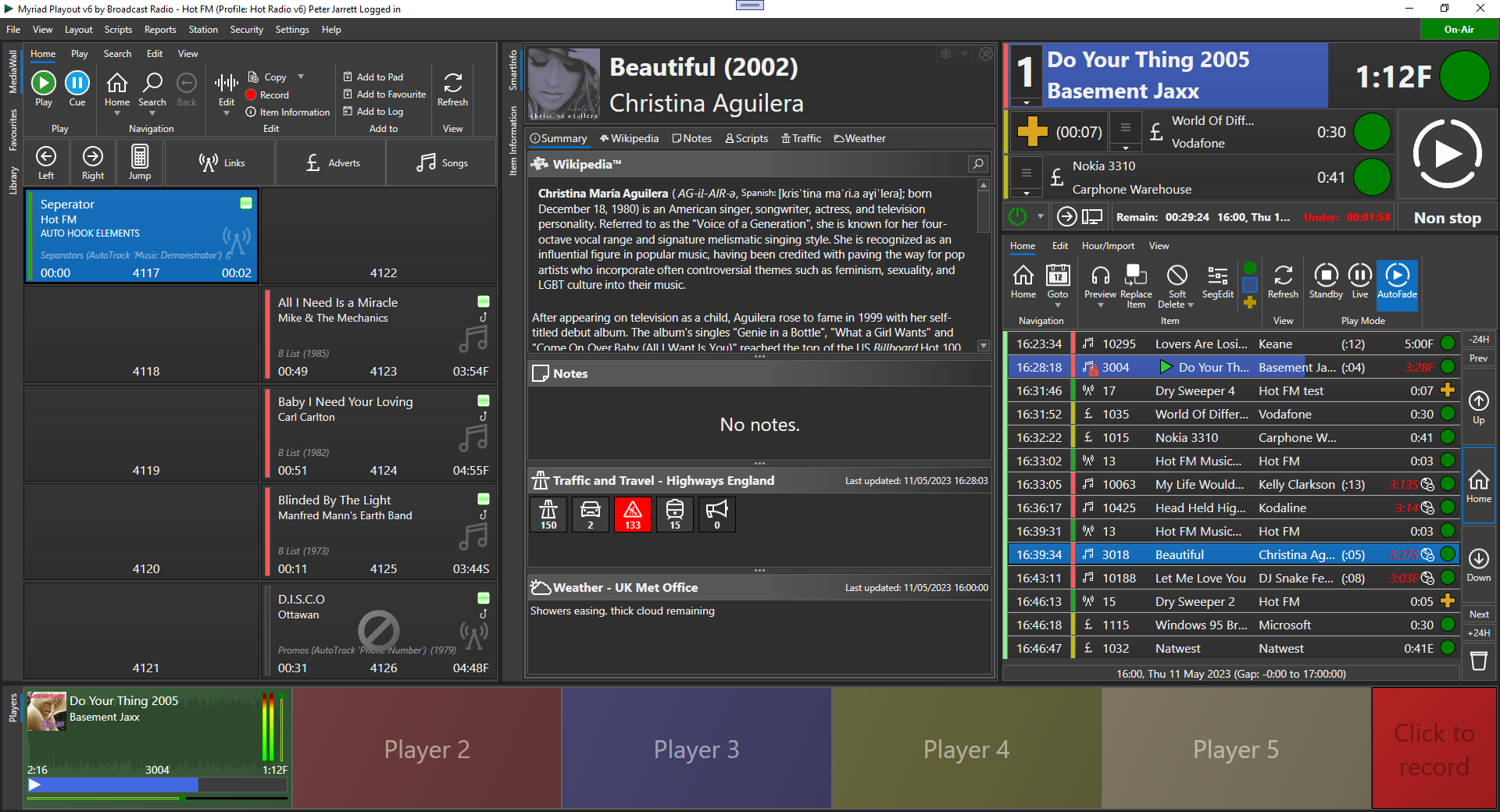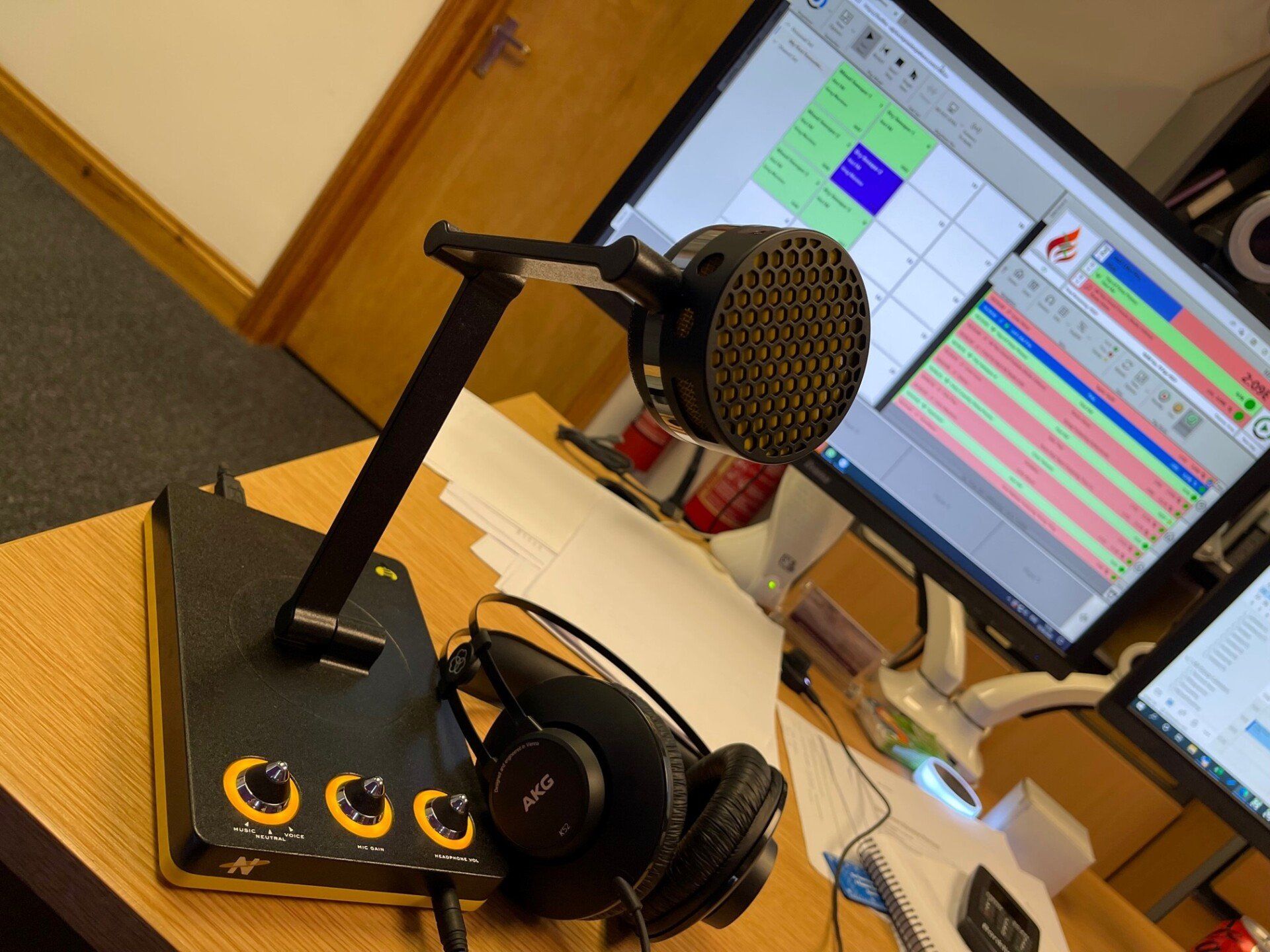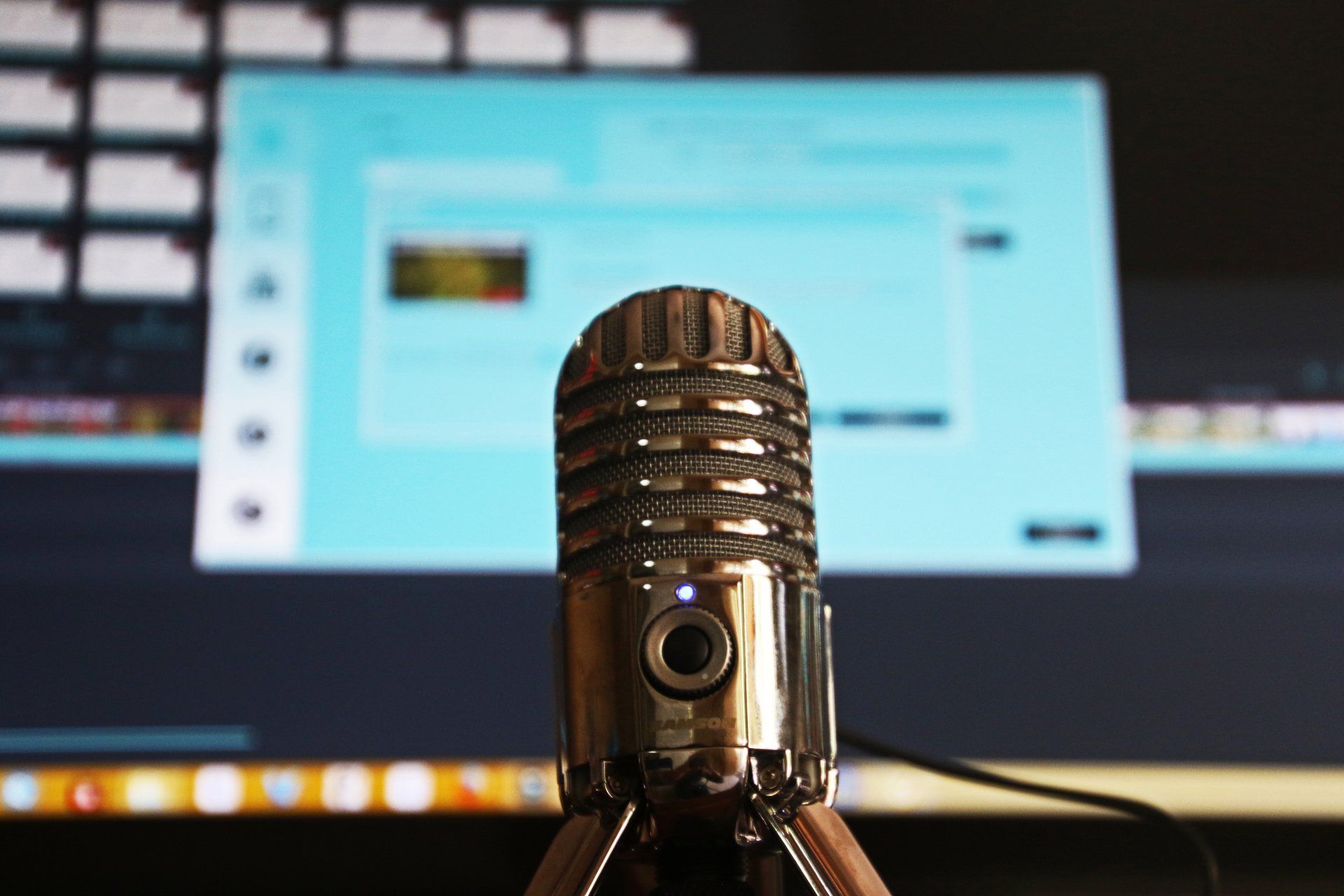Bett 2019 - Review
David Boulton • January 29, 2019
We were at BETT last week, it's the largest Educational Resource Exhibition in UK.If you didn't manage to get to the show, find out what we did, with our show report:
As the dust settles on BETT 2019, we look back at one of most exciting shows ever!
The main focus of our stand at the BETT show this year was showcasing our two band new studio packages, the SR1 and SR2.
The SR1 is a small, self-contained studio package ideal for schools looking to make School Radio programs or present level shows.post
The package consists of:
- Webstation 6 Channel Mixer
- Myriad Playout PC
- Myriad LT Software
- AutoPlayer Software
- 22" Touchscreen
- 22" Standard Screen (for clock & VU's)
- Dual Monitor Arm
- 2 x Condenser Microphones*
- 2 x Studio Headphones*
- 2 x Articulated Mic Arms*
- 2 x Speakers*
- Half Moon Studio Furniture
- 12 Months Streaming & School Radio Player
- 12 Months Office Hour Support
- Lifetime Accesss To School Radio Resources
- * Upgraded compared to 2018 Starter Plus
The SR2 builds on the SR1 with a bigger, more flexible mixer and an additional mic position built around a substantial 'round table' studio furniture.
The package consists of:
- Airlite 8 Channel Mixer
- Myriad Playout PC
- Myriad LT Software
- AutoPlayer Software
- 22" Touchscreen
- 12" Mini Screen (for clock & VU's)
- 3 x Condenser Microphones*
- 3 x Studio Headphones*
- 3 x Articulated Mic Arms*
- 1 x Tower LED 'Mic Live' Light
- 2 x Speakers (on stands)*
- Round Table Studio Furniture
- 12 Months Streaming & School Radio Player
- 12 Months Office Hour Support
- Lifetime Accesss To School Radio Resources
For more information, check out the SR2 Package page.
In addition to the new SR1 and SR2, we also launched a new resource which is available now for all School Radio customers.
The 'How To Make School Radio Show' book guide you through the entire process from start to finish as well as adding additional show ideas and example resources.
All customers can download the PDF version from the Resources section today.
Also all new 2019 Studio packages come with a glossy, full colour printed copy of the book!
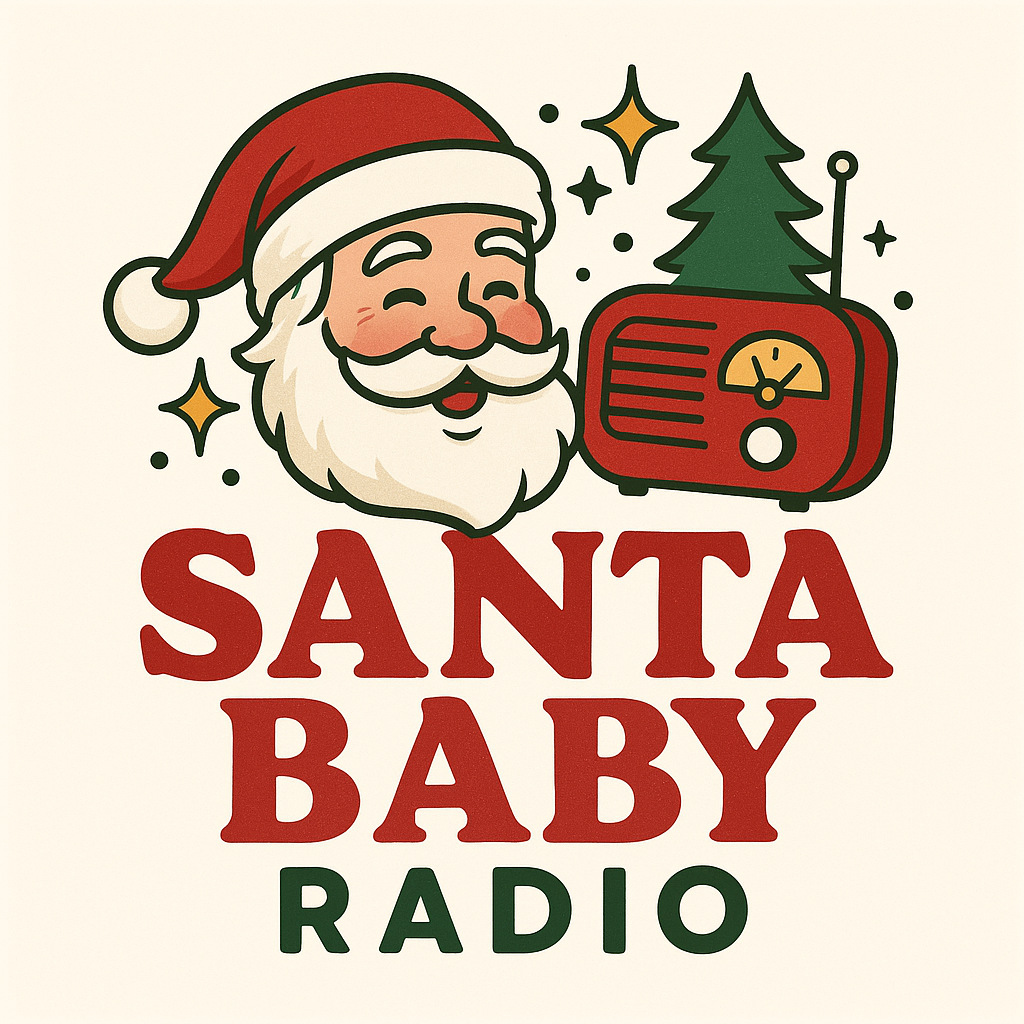
In this post we will run through how to create a new Station under the Kelfield Radio ‘Brand’ within Myriad Cloud. This assumes that your primary radio station is also on Myriad Cloud. Don’t worry if your primary station is a traditional ‘on premise’ Myriad Playout 6 system, we will be covering how to setup from a traditional system in the next post. In this post, we will cover the steps needed to create a new Station within an existing ‘Brand’ running on Myriad Cloud, but before we start, it is worth mentioning how hierarchy of Organisations, Brands and Stations works in Myriad Cloud.

Too early to start thinking about Christmas? You may not need to be baking Mince Pies just yet, but if you are thinking about running a festive pop-up radio station this holiday season, you may want to start planning for it now. Over the next few weeks, we are going to guide you through the process of building a fictional festive station called Santa Baby Radio, using the Myriad Cloud platform. This station will be a spin off from the equally fictional Kelfield Radio often featured in our demos and tutorial videos. In this series we will cover every step needed to setup, build and launch Santa Baby Radio using Myriad Cloud. This will include: * Creating a new Station within the Kelfield Radio brand which will share audio content with the parent station. * Use the Mass Change tools to only use the content we want on Santa Baby Radio, and fill in any gaps by uploading news songs and jingles. * Build some clocks and assign them to the weeks leading up to Christmas. * Setup AI Voice Links to add some special, context sensitive content that will make this fully automated service sound live. * Design and build a simple website and web player for the station. * Add in the details needed for the optional mobile apps (iOS, Android & Carplay) as well as an Alexa Skill. * Invite some presenters to voice track shows and even present a special live show on Christmas eve. * Launch the radio station and get started on the mince pies. We will cover these steps in posts released over the coming weeks, so check back regularly for the latest episode.
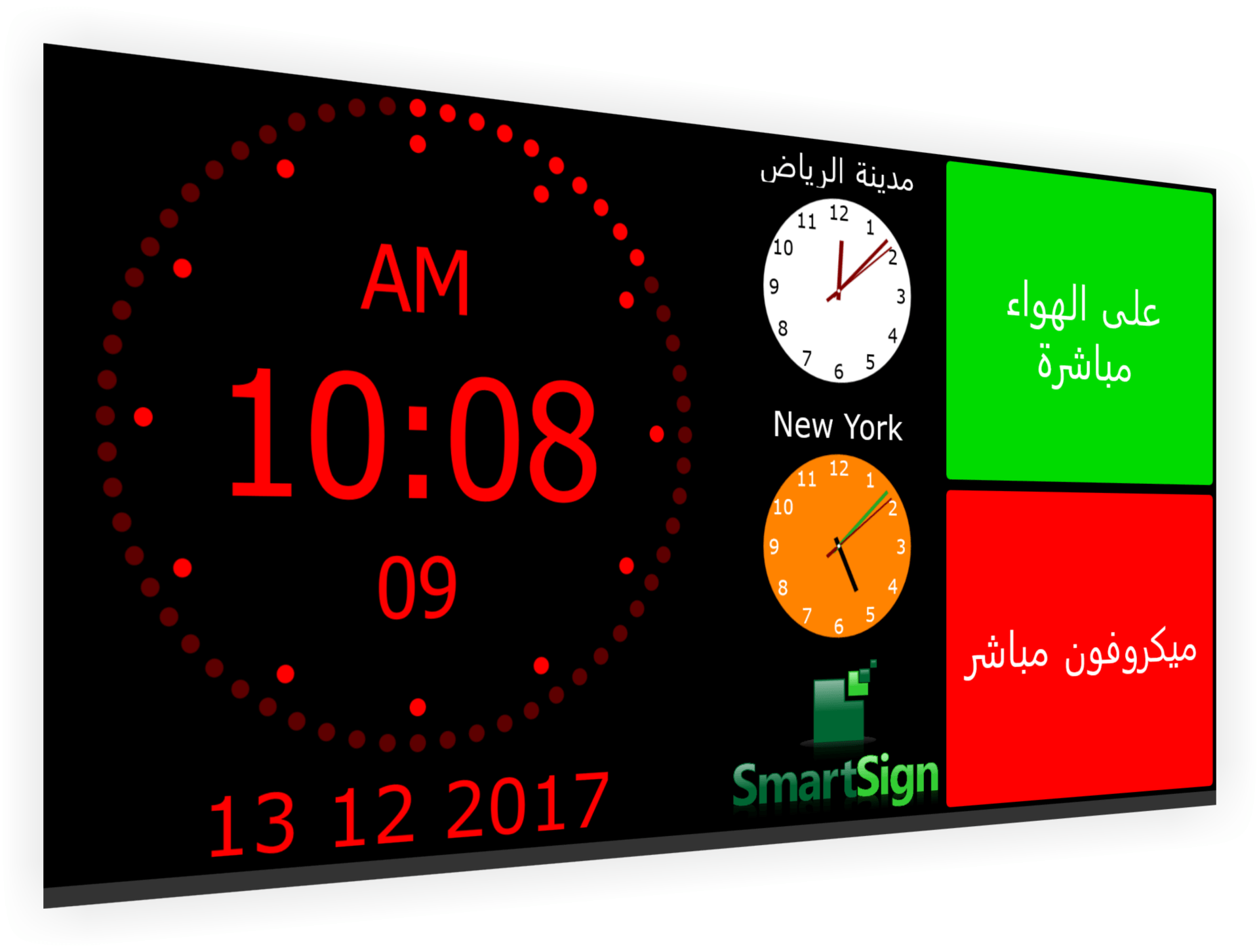
In anticipation of the release of SmartSign 3, we are looking back at the history of our screen studio signage system as well as a quick look at what the future holds. SmartSign 1 (well just SmartSign) was originally conceived as a simple ‘tally’ indicator to how real world events such as when microphones are active or a phone is ringing. At the time, we were working on the BR Hardware Service as part of the general Myriad 5 development cycle, and wanted a way to showcase the virtual hardware events the BR Hardware Service introduced. One of the aims was to make the system as cost effective as possible so work began on building an application that would run on Windows IOT on a Raspberry Pi. The Pi was ideal as it included physical hardware I/O built in meaning that SmartSign could use both physical and virtual GPIO and even convert physical inputs to virtual inputs for use in other BR software such as Myriad Logging or other SmartSigns. We soon started to add other ‘tiles’ to the system to allow clocks, date / time, text, images, RSS feeds and more. SmartSign was released in 2016 and was an instant hit with our customers.

We are often asked for recommendations for smaller, low cost mixers for stations that are launching on a tight budget or looking to add additional studio capacity as cost effectively as possible. Type 'stereo mixer' into Google and literally hundreds of options will come up but the vast majority of them are not really suitable for use with Myriad because they do not have enough stereo inputs, are designed for sound mixing or do not offer the basic facilities needed to present a radio show. But there are a few that could be considered as a possible alternative to a full broadcast mixer. The Behringer DX2000USB may be the ideal mixer for smaller stations, as long as they are willing to live the compromises it brings when used in a broadcast radio environment.


